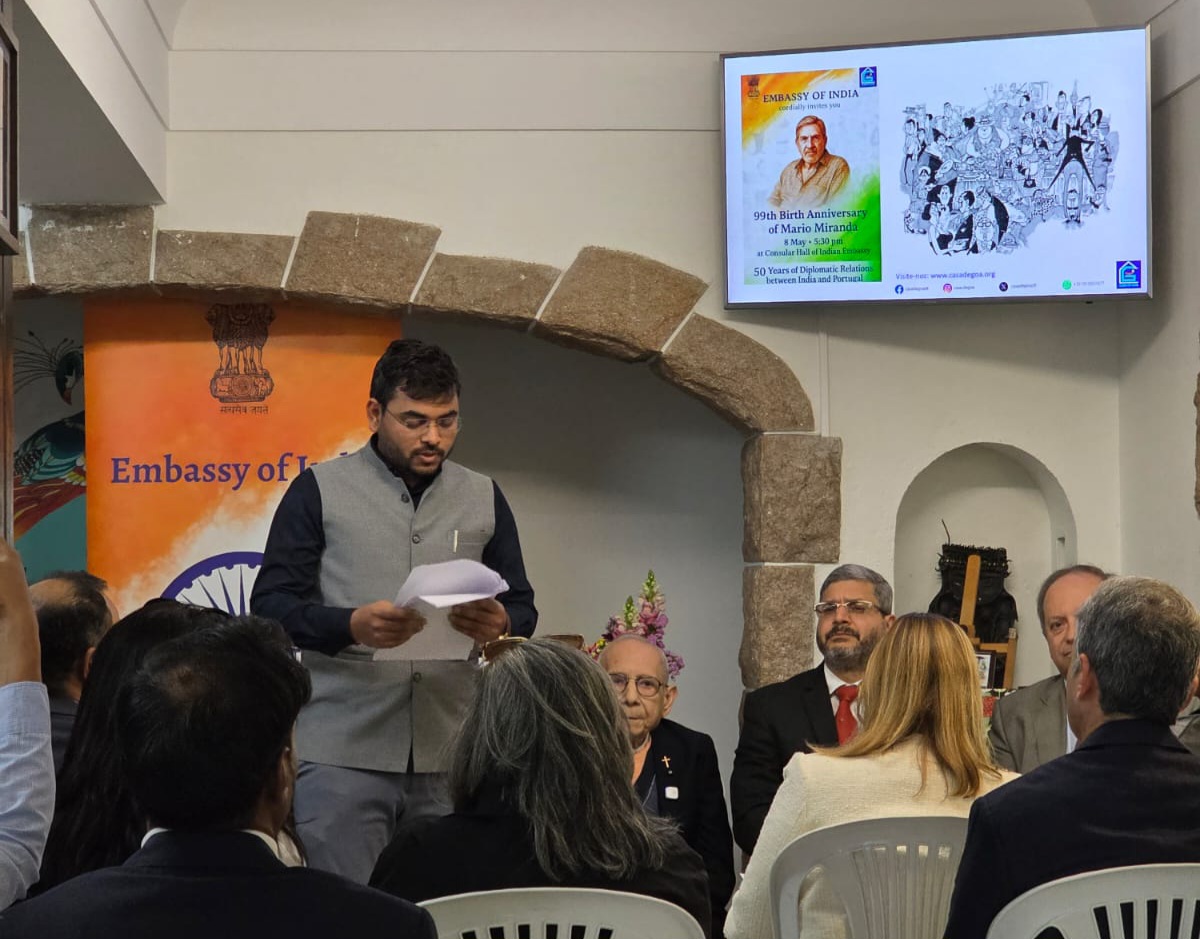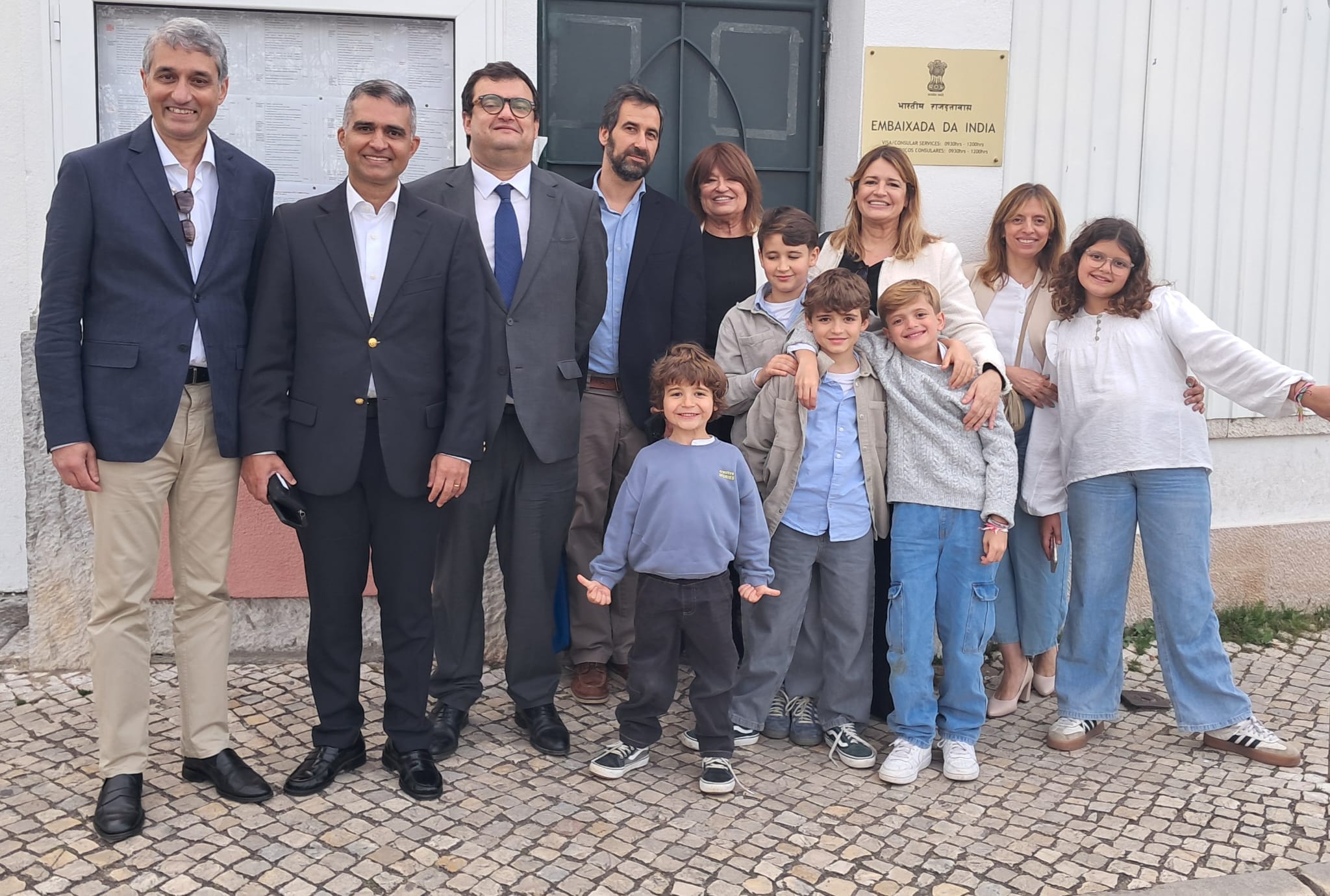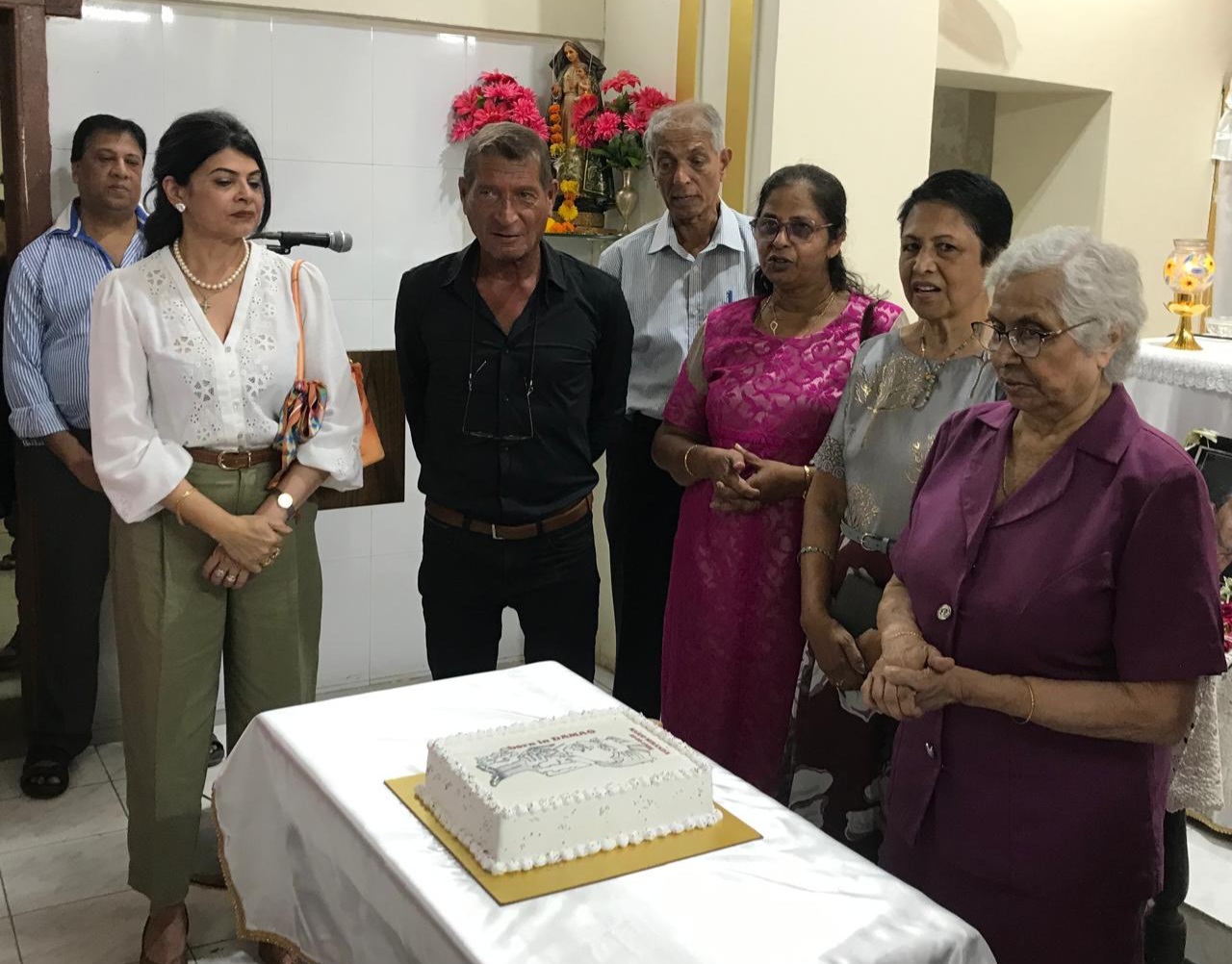
Shashikant Narvade, Third Secretary, Embassy of India at Lisbon while speaking at a tribute hosted by the Embassy of India in Lisbon to mark the beginning of the birth centenary of Mario Miranda.
LISBON
The Embassy of India in Lisbon hosted a heartfelt tribute on May 8 to mark the beginning of the birth centenary of my granduncle, Mario Miranda, the legendary Goan illustrator whose artistic legacy transcends borders.
THE ARTIST
Widely regarded as one of India’s most beloved visual storytellers, Miranda was celebrated not only as an illustrator but as a keen observer of social life, whose sharp eye captured the humour and rhythm of everyday life in Goa and India.
Often remembered as a cartoonist, Mario Miranda was, in truth, a multifaceted artist — illustrator, caricaturist, painter, chronicler and watercolourist. His work ranged from whimsical black-ink drawings to delicate watercolours and cityscapes.
Whether using Chinese ink or pastel, he captured the soul of Goa, India, and cities like Lisbon, New York, Berlin, Paris, Israel, Madrid, Barcelona, Macau, to name only a few — all seen through his curious, compassionate eye. He made the ordinary extraordinary, preserving entire worlds in a single frame.
THE EVENT
The ceremony opened with remarks by His Excellency Puneet Kundal, Ambassador of India to Portugal, who described Miranda as “a unique figure in the arts,” praising his ability to portray Indian society with charm and accuracy. “His drawings remain timeless because they reflect people as they are — with quirks, flaws, and vitality," remarked Kundal.
Fr António Colimão, a native of Daman and the driving force behind the initiative, emphasised Miranda’s roots: “He was a son of Daman, where he was born and baptised.”
His words highlighted the artist’s Daman family heritage and the importance of remembering those who shape identity.
Vasco Soares da Veiga, President of Casa de Goa and co-organiser, described Miranda’s work as “a lasting contribution to the cultural heritage of Goa, which gave its people visibility and voice through drawing.”
The event included a moment of solemnity, as Ambassador Kundal invited guests to observe a minute of silence in memory of the 26 civilian victims in Pahalgam, Kashmir.
This collective moment of mourning reminded us of the importance of empathy, diplomacy and shared memory in building bridges. It reinforced Mario’s legacy as an invaluable contributor to intercultural understanding — from Goa and across the Indian diaspora.
 Relatives of Mario Miranda in Portugal.
Relatives of Mario Miranda in Portugal.
Special guests included photographer Ulka Chauhan and art curator Samira Sheth, in Lisbon for the launch of their photo book 'The Memory Keepers & Future Seekers' at the Museu do Oriente. Sheth praised the Embassy’s “support for the arts and for keeping Mario’s legacy alive for younger generations.”
Chauhan added, “Mario brought people together – his art is rooted in Goa but speaks universally.”
A musical highlight came from lyrical mezzo-soprano Carolina Figueiredo, who performed two rhapsodies from Daman, Diu and Goa. Her performance moved the audience and earned prolonged applause.
The evening ended with fresh samosas and masala chai, shared in a warm atmosphere — a fitting tribute to a man who chronicled the everyday lives of ordinary people, recreated historical memory, and consecrated cultural identity across the globe.
THE CONNECT
On a personal note, I remember our time in Loutulim with great fondness. Uncle Mario was warm, attentive, and quietly brilliant. Our conversations, often over wine, unfolded in a mix of peaceful rhythm and the bustle of friends and visitors, always with Aunt Habiba at his side.
He often spoke of his saudade for old Lisbon and fado, and for a Portuguese identity he believed still lived on in Goa — proudly taking me to places where that spirit endured, where people sang fado and mandó.
He was, in every sense, a visual anthropologist — chronicling our habits, contradictions and joys with precision and affection.
That perspective — free of cynicism or agenda — enabled Miranda to create portraits that resonate universally. Though often called a cartoonist, he avoided political satire. Instead, he mapped India’s evolving identity with empathy and humour.
I noted how Miranda portrayed a wide range of characters — from Portuguese soldiers and Goan elites to Mumbai city dwellers and Indian Maharajas — allowing viewers to see themselves in his drawings with affection and without prejudice.
For me, his greatest achievement was to have created more than images — he shaped a timeless cultural identity, bridging India, Goa, Portugal, and the world.
Through his art, my granduncle Mario Miranda became an ambassador of Goan and Indian culture to the world — and a gateway through which the world came to know Goa and India.
THE GOAN | DAMAN
A simple but meaningful homage in Damão Pequeno (Nani Daman) kickstarted the centenary of the acclaimed Mario Miranda.
Not many know that Mario was born in Daman on May 2, 1926, and baptised on June 8, 1926, in the Church of Nossa Senhora do Mar, which lies within the Fort of São Jerónimo. Daman chose to celebrate Mario on May 2, to mark his 99th birth anniversary.
 Friends and admirers gather to cut the cake to mark the 99th birth anniversary of Mario Miranda. Photo: Noel Gama
Friends and admirers gather to cut the cake to mark the 99th birth anniversary of Mario Miranda. Photo: Noel Gama
Goan writer Vivek Menezes went specially to Daman for this occasion equipped with the heavy coffee table book Mario de Miranda, published by Gerard da Cunha and Architecture Autonomous. Menezes went to visit the N.S. dos Remedios Church, Moti Daman, with a watercolor of the Church by Mario, the prints of which are widely available at Mario Gallery in Goa.
“The choir (which was practicing for the annual feast of the church on the following day) sang “Parabéns nesta data querida (greetings on this special date)”, said Noel Gama, a musician and writer from Daman, and a fan of Mario.
On September 21, 1826, the first chapel in Nani Daman was inaugurated and blessed as Capela de Santa Cruz (Holy Cross Chapel) by Dom António Pedro da Costa, Archbishop of Cranganore and the first Bishop of Daman. It was gifted to the community by Luis Diogo de Brito, advocate and writer, founder of the Portuguese language newspaper Oriental in Daman. He was Mário’s maternal grandfather.
In that very Chapel, after the vespers of the feast of the Holy Cross which was to follow on May 3, the Parish Priest, Father Lancelot Fernandes SFX, agreed to mention Mario and allow a celebration.
Silvana Pereira, a retired government officer, soldiered bravely in the umpteenth hour to organise the occasion. Orlando Miranda, a retired government officer, gave a short speech.
Mário’s garlanded photo stood by the altar with an ingenious cake depicting a self-cartoon, which was cut by the oldest person present. The congregation then queued to shower petals on his photo.
Components of the Consular Mission 2025 of the Portuguese Consulate General in Goa also graced the occasion.
Commenting on Mario's meticuously kept diaries, Noel Gama said: "Mario had drawn a caricature of my mum as seen from behind only! She had told me it was so perfectly done that anyone who knew her would know it was her! This is how acutely observant Mário was.”
In 2024, the Collector of Daman had a mural copied with Mario’s drawings in Moti Daman.